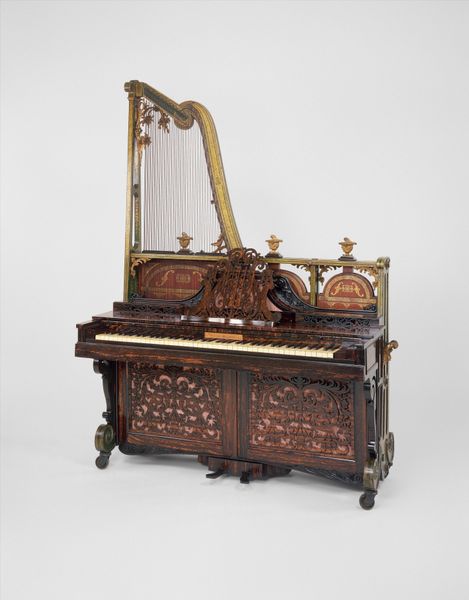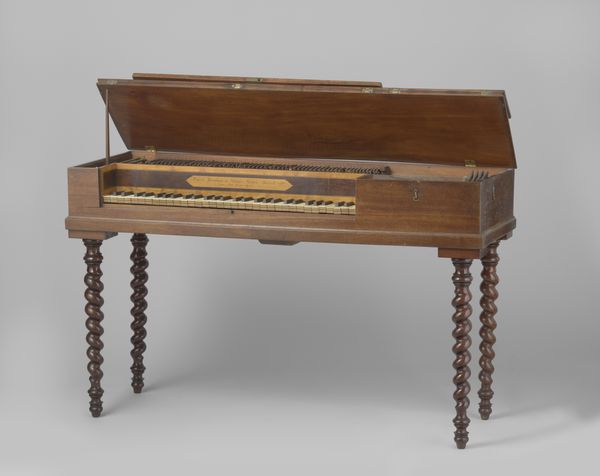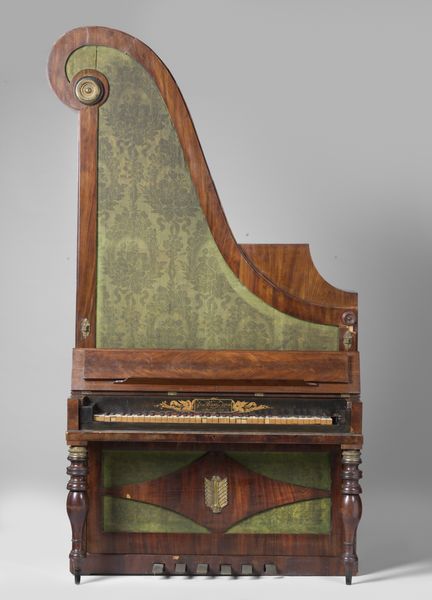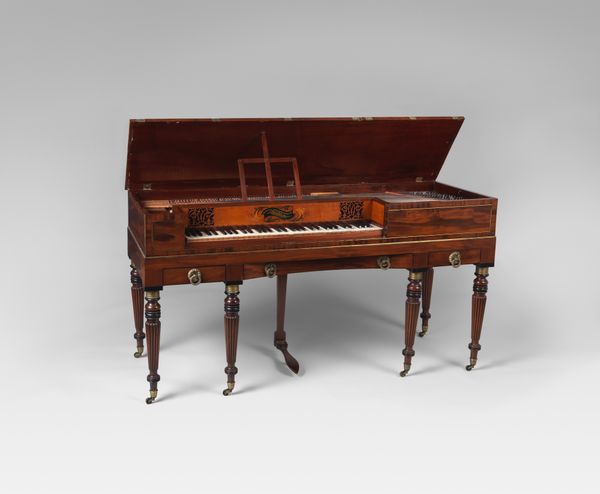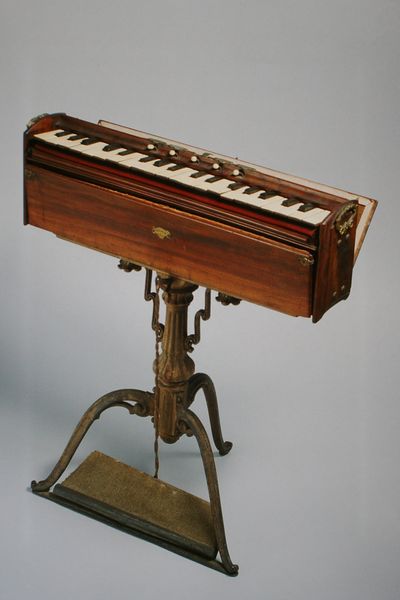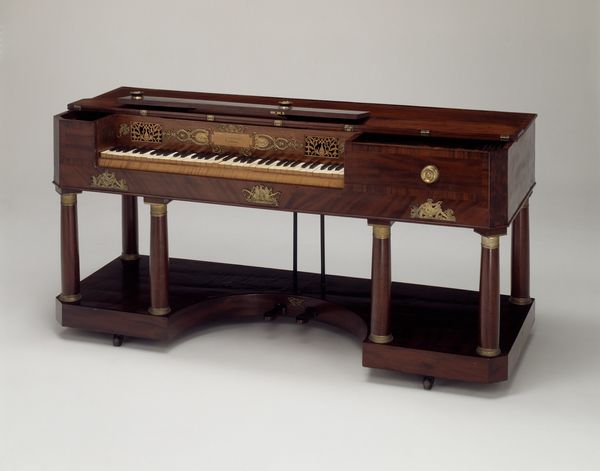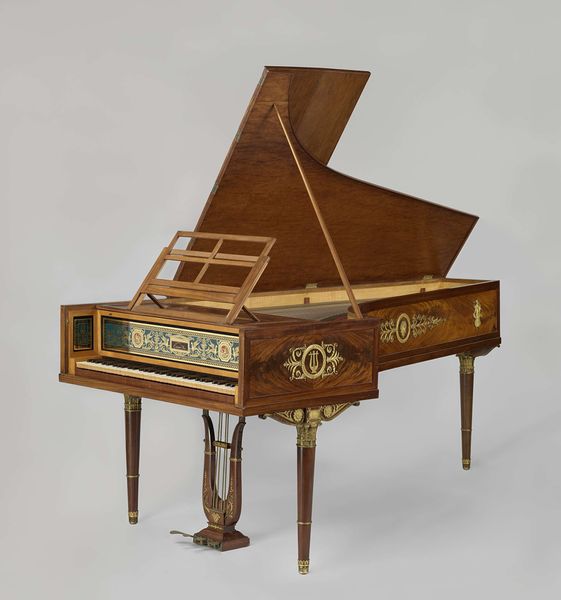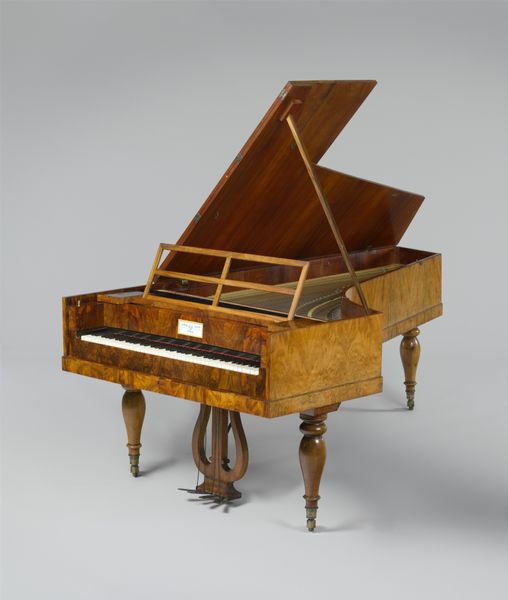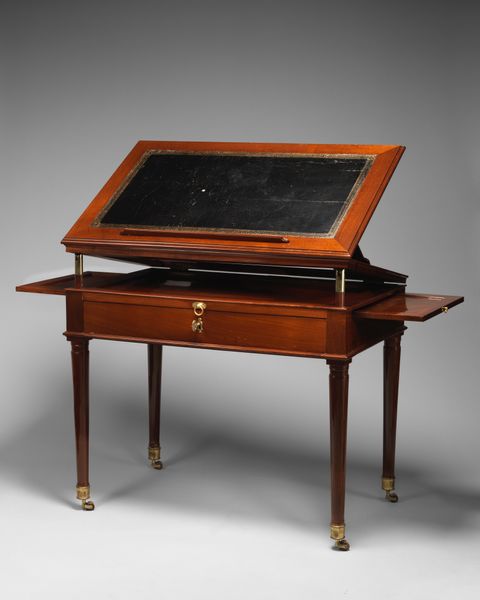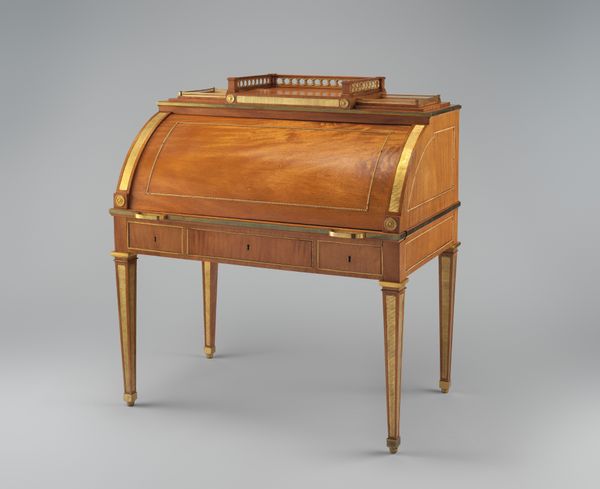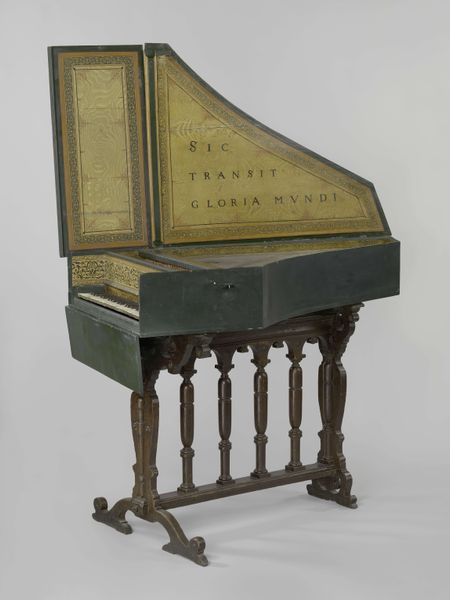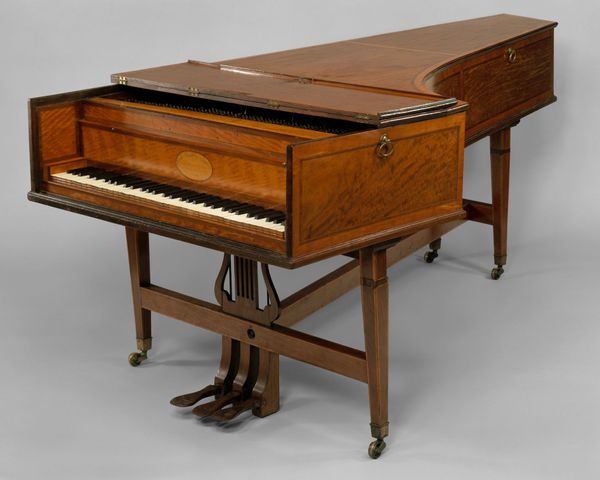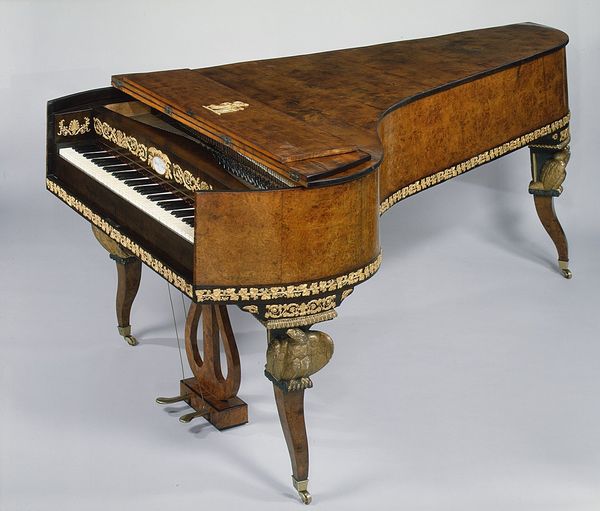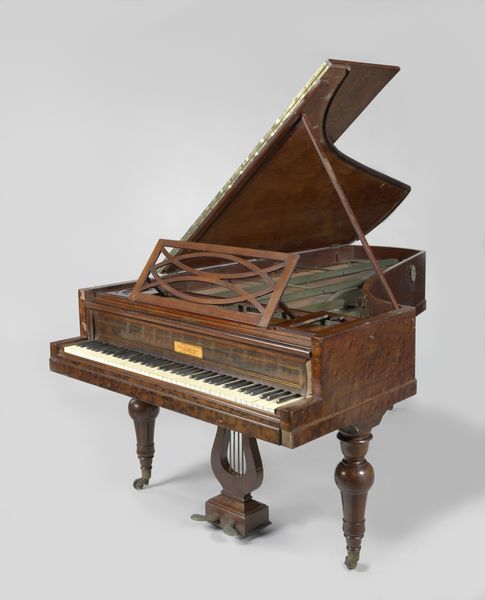
Dimensions: H. 26 3/8 ×W. 21 15/16 × D. 11 in. (67 × 55.7 × 28 cm)
Copyright: Public Domain
This is a reed organ, or physharmonica, made by Alexander-François Debain in the 19th century. The structure is a fascinating blend of geometric and organic forms, rendered in a rich palette of wood, brass, and red felt. The eye is immediately drawn to the contrast between the rectilinear case and the lyre-shaped supports, which lends the piece a striking visual tension. Debain was known for his innovative approach to instrument design, and this physharmonica exemplifies his structural and material ingenuity. The careful attention to detail, from the polished wood to the ornate brass fittings, speaks to a semiotic system of signs associated with luxury. Yet, the overall form challenges conventional ideas of musical instrument aesthetics. Notice how the dark wood and the red felt create a visual rhythm, a cadence that complements the musical function of the object. This interplay between form and function, aesthetics and utility, underscores Debain's engagement with broader philosophical questions about art, technology, and the human experience. The physharmonica’s structure reflects an ongoing dialogue between visual and auditory expression.
Comments
No comments
Be the first to comment and join the conversation on the ultimate creative platform.
